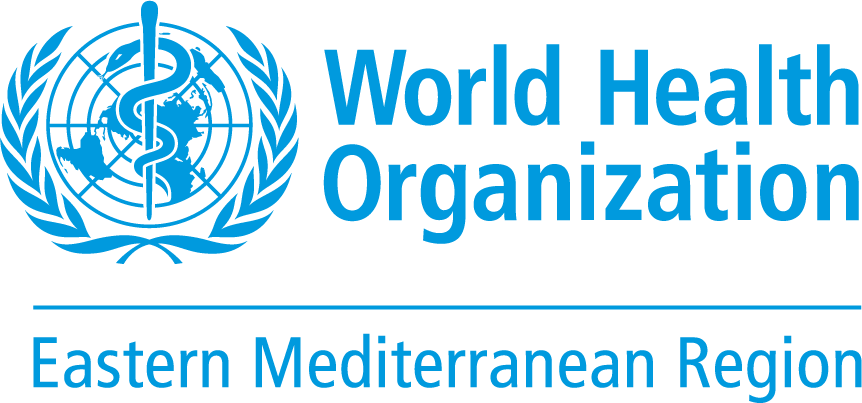Letter to the editor
Giancarlo Ceccarelli1, Francesco Branda2, Marta Giovanetti3,4, Fabio Scarpa5 and Massimo Ciccozzi2
1Department of Public Health and Infectious Diseases, University Hospital Policlinico Umberto I, Sapienza University of Rome, Rome, Italy. 2Unit of Medical Statistics and Molecular Epidemiology, University Campus Bio-Medico of Rome, 00128 Rome, Italy (Correspondence to Francesco Branda: This e-mail address is being protected from spambots. You need JavaScript enabled to view it ). 3Sciences and Technologies for Sustainable Development and One Health, Università Campus Bio-Medico di Roma, Italy. 4Instituto Rene Rachou, Fundação Oswaldo Cruz, Minas Gerais, Brazila. 5Department of Biomedical Sciences, University of Sassari, Sassari, Italy.
Keywords: polio, immunization, health system, Gaza
Citation: Ceccarelli G, Branda F, Giovanetti M, Scarpa F, Ciccozzi M. Polio resurgence in Gaza: Unveiling immunization barriers in a fragile healthcare system. East Mediterr Health J. 2025;31(2):134–135. https://doi.org/10.26719/2025.31.2.134.
Received: 18/10/2024; Accepted: 16/01/2025
Copyright: © Authors 2025; Licensee: World Health Organization. EMHJ is an open access journal. All papers published in EMHJ are available under the Creative Commons Attribution Non-Commercial ShareAlike 3.0 IGO licence (CC BY-NC-SA 3.0 IGO; https://creativecommons.org/licenses/by-nc-sa/3.0/igo).
Dear Editor,
The current conflict in the Gaza Strip has precipitated a multifaceted crisis in healthcare and public health surveillance, with devastating consequences for the population (1). We read with great interest the article by Burki (2) on the polio vaccination campaign in Gaza, which exceeded expectations in its first phase despite the extraordinary challenges posed by the conflict and the destruction of healthcare infrastructure. As Burki notes, over 400 000 children received the first dose of the novel oral polio vaccine type 2 (nOPV2), offering hope in preventing further transmission of circulating variant poliovirus type 2 (cVDPV2). This swift response is commendable; however, it underscores the complexities involved in implementing vaccination strategies in fragile settings (1,3).
The estimated vaccination threshold for herd immunity against polio is at least 85% (3), generally considered sufficient to interrupt virus circulation. However, this threshold can fluctuate significantly in highly challenging contexts, influenced by factors beyond viral contagiousness and vaccine efficacy.
Firstly, population distribution plays a crucial role. Densely populated communities or those with inadequate sanitation often necessitate a higher herd immunity threshold. The Gaza Strip, a densely populated coastal enclave with approximately 14 000 people per square mile (about 21 000 per square mile in urban areas), exemplifies this challenge (2,3). Limited open spaces, due to inadequate planning and urban sprawl, exacerbate the situation and the lack of safe drinking water exacerbates vulnerability to infectious diseases, including polio.
Secondly, birth and infant mortality rates are critical factors in vaccination efforts. In regions with social and political instability, where logistics challenges hinder immunization campaigns, high birth rates combined with inadequate immunization coverage can quickly erode community immunity. For instance, the Gaza Strip reported over 66 000 births in 2023 (4). Although a remarkable 99% polio immunization rate was achieved by 2022, the prolonged conflict has disrupted immunization logistics, leading to a troubling decrease in coverage to below 90% by 2024 (5).
Thirdly, the strained healthcare infrastructure significantly exacerbates polio resurgence. Of the 36 hospitals in Gaza, only 3 remain fully operational following repeated attacks. The remaining 12 facilities, predominantly small health centres, are overwhelmed and struggle to deliver essential services, severely restricting healthcare access for the population (3). Frequent power outages and electricity failures disrupt the cold chain, essential for vaccine storage and distribution, further complicating efforts to maintain immunization programmes.
Additionally, policy, operational and implementation-level barriers pose significant challenges. The current conflict and lack of coordinated governance hinder the development of a robust immunization strategy. The absence of a systematic needs assessment in conflict zones limits the ability to identify critical gaps in infrastructure, human resources and vaccine supply chains. Operational inefficiencies, such as delays in vaccine delivery, and implementation gaps, including insufficient trained personnel, further undermine immunization efforts. Parental concerns and community perceptions regarding immunization also represent a significant barrier. Misinformation about polio and its complications, combined with a lack of awareness campaigns, fosters vaccine hesitancy in some communities. Addressing these issues requires targeted actions to improve awareness, including community engagement programmes that highlight the importance of polio vaccination and its role in preventing lifelong disabilities. Conducting surveys to assess public awareness and addressing common parental queries can help build trust and dispel myths about vaccine safety and efficacy. To overcome these barriers, a comprehensive vaccination campaign should be implemented, targeting multiple vaccine-preventable diseases alongside polio. Such an integrated approach can maximize resource use and improve overall public health outcomes.
Strengthening the healthcare system, including restoring hospital functionality and ensuring a stable electricity supply, is crucial for sustaining immunization efforts. Community-based interventions must focus on increasing vaccine acceptance through educational programmes and active involvement of local leaders and healthcare workers. Enhanced coordination between international organizations and local authorities can help address logistics challenges and ensure the continuous availability of vaccines.
Continuous surveillance to monitor immunization coverage and assess population immunity levels is vital to pre-empt future outbreaks. The integration of eco-epidemiological factors, such as urban density and sanitation, into vaccination strategies can further enhance their effectiveness in fragile settings like Gaza. The polio resurgence in Gaza underscores an urgent need for targeted interventions to overcome barriers at policy, operational and implementation levels. Addressing the intertwined challenges of conflict, infrastructure deterioration and vaccine hesitancy requires a multifaceted approach that prioritizes community engagement, robust healthcare systems and coordinated international support.
Funding: None.
Competing interest: None declared.
References
- Qureshi YA, Dawas K, Maynard ND. Excess deaths in Gaza. Lancet Glob Health 2024;12(9):e1395. doi: 10.1016/S2214-109X(24)00267-5.
- Burki T. Polio vaccination campaign in Gaza. Lancet Infec Dis. 2024;12. doi: 10.1016/S1473-3099(24)00612-1
- Mahase E. Gaza: Seven day ceasefire is crucial for polio vaccination campaign, says WHO. BMJ. 2024;386:q1816. doi: 10.1136/bmj.q1816.
- Save the Children. Born into war: About 15,000 babies expected to be born into crisis in Gaza by end of 2023. London: Save the Children, 2023. https://www.savethechildren.net/news/born-war-about-15000-babies-expected-be-born-crisis-gaza-end-2023.
- World Health Organization. First phase of polio campaign concludes successfully in Gaza. Geneva: World Health Organization, 2024. https://www.who.int/news/item/04-09-2024-first-phase-of-polio-campaign-concludes-successfully-in-gaza.




